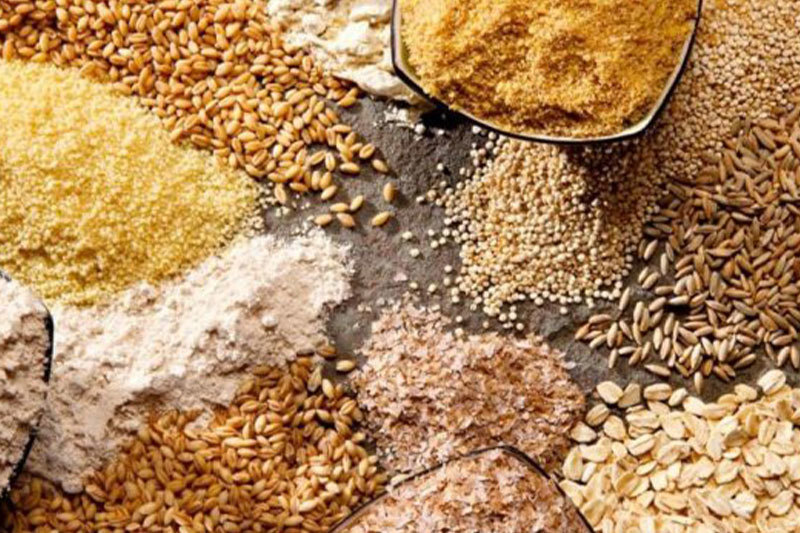Analysis of industrial chain pattern and market share of China's feed industry
Release time:
2023-12-13
From the perspective of the five-force competition model, the number of enterprises in China's feed industry is still large, although the concentration has increased, but the industry competition is still fierce; the upstream raw materials of the feed industry mainly include corn, soybean meal additives, etc.

Industry scale
On the whole, the total output value and total operating income of the national feed industry have achieved double growth, and the overall operation of the feed industry has maintained a stable and positive trend. In 2022, the total output value of China's feed industry was 1316.85 billion billion yuan, an increase of 7.6 percent over the previous year; the total operating income was 1261.73 billion billion yuan, an increase of 8.0 percent over the same period last year.
Total production
According to statistics from the China Feed Industry Association, China's total industrial feed output in 2022 was 302.234 million tons, an increase of 3.0 percent over the previous year, and the growth rate declined significantly. In addition, there are 36 feed enterprise groups with an annual output of more than one million tons, a decrease of 3 from 2021. The total feed output accounts for 57.5 percent of the country's total feed output, a decrease of 2.2 percentage points year-on-year.
Subdivided varieties
In terms of subdivided varieties, the proportion of pig feed production is the highest. In 2022, China's pig feed production was 135.975 million tons, up 4.0 percent year-on-year; egg and poultry feed production was 32.109 million tons, down 0.6 percent; meat and poultry feed production was 89.254 million tons, up 0.2 percent; and ruminant feed production was 16.168 million tons. Growth of 9.2 per cent; Aquatic feed production 25.257 million tons, up 10.2 per cent; Pet feed production 1.237 million tons. Growth of 9.5 per cent; other feed production 2.233 million tons, down 7.2 per cent.
The upstream of the feed industry chain is raw materials, mainly including energy raw materials, protein raw materials, microbial raw materials, etc. Research and development and production of midstream feed products, the main products include pig feed, poultry feed, ruminant feed, aquatic feed, etc.; downstream is the demand side of feed, mostly farmers and breeding enterprises, the scope of breeding covers poultry breeding, animal husbandry, aquaculture and so on.
In terms of upstream raw materials, in recent years, the state has promoted the reduction and substitution of corn and soybean meal. In the future, the dependence of upstream raw materials on foreign sources will be reduced, the domestic raw material library will be gradually established, and the stability of raw materials will be gradually improved. The innovation ability of the midstream feed production link is strengthened, the research and development of new products is accelerated, and the vertical integration of midstream enterprises is deepened, and the connection between the midstream link and the upstream and downstream will be closer. In the feed downstream aquaculture industry, the increase in meat consumption in China will increase the scale of the downstream aquaculture industry.
Summary of China's feed industry competition status
From the perspective of the five forces competition model, the number of enterprises in China's feed industry is still large. Although the concentration has increased, the industry competition is still fierce. The upstream raw materials of the feed industry mainly include corn and soybean meal additives. At present, the supply of feed raw materials is still insufficient, and the bargaining power of upstream suppliers is strong. The downstream of the feed industry is aquaculture, and the scale development of aquaculture is accelerating, large-scale breeding enterprises have large demand for feed and strengthened backward integration capabilities, and have strong bargaining power for the feed industry; although the entry barriers of the feed industry are low, it is easier for enterprises to enter the market, but the industry's gross profit level is low and the market scale is growing. The slowdown has reduced the attractiveness of new entrants, and the threat of new entrants is small; the threat of substitutes in the feed industry is mainly substitution between different feed products. For example, environmentally friendly feed for the replacement of ordinary products, corn, soybean meal is replaced by other grains and miscellaneous meal, with the promotion of national policy, this alternative trend will be strengthened.
Tag:
Next
Recommended
Share


